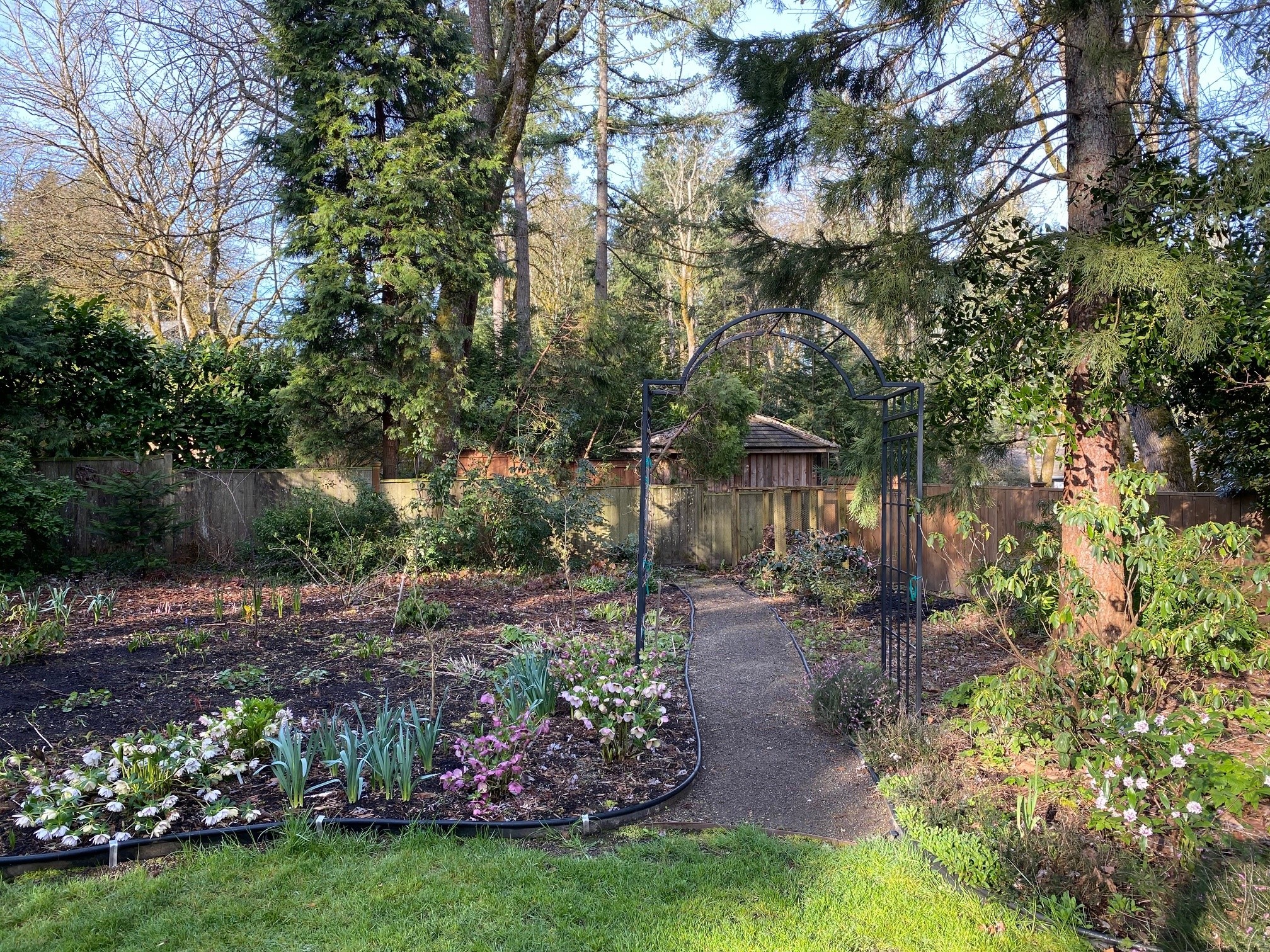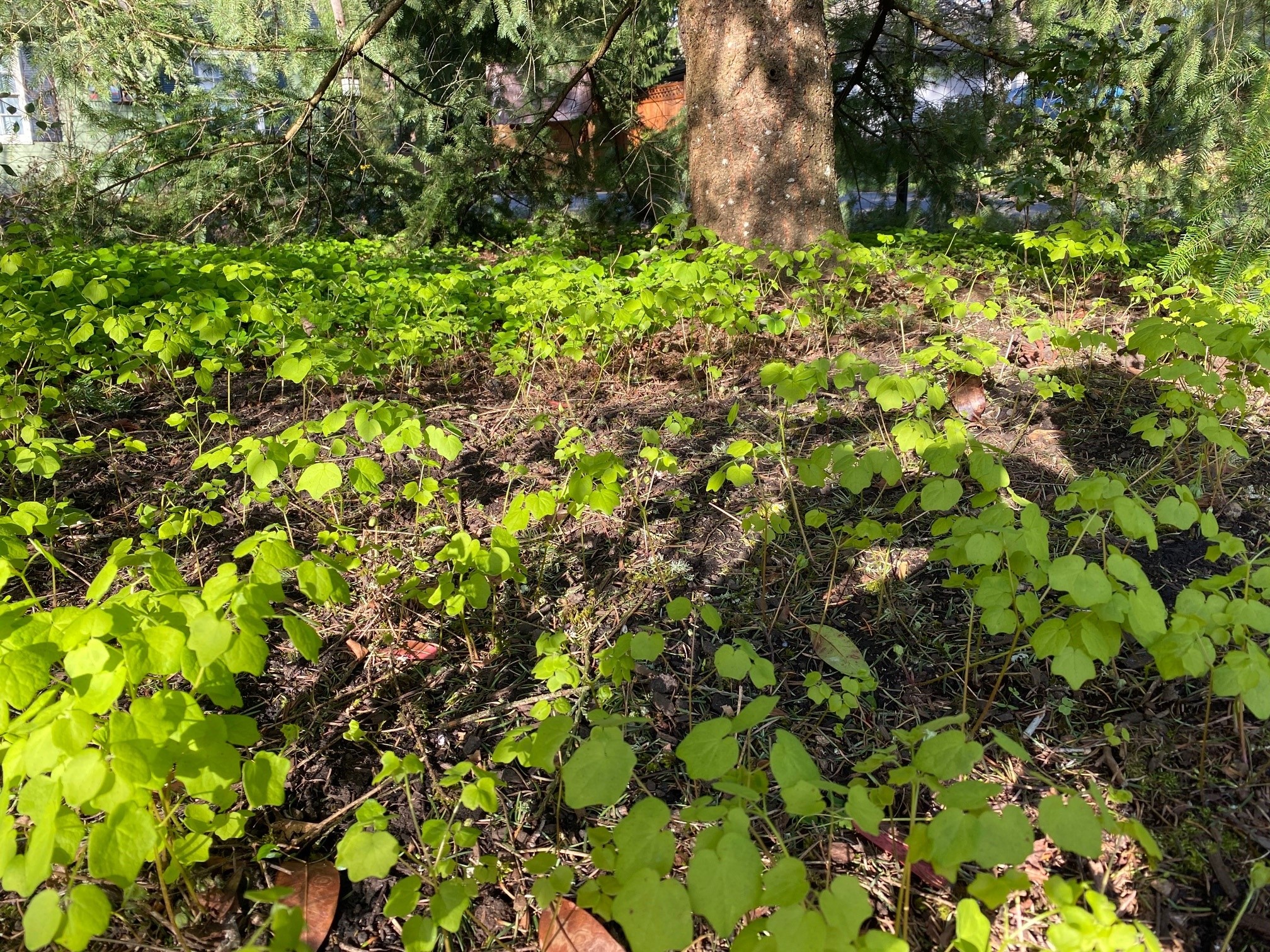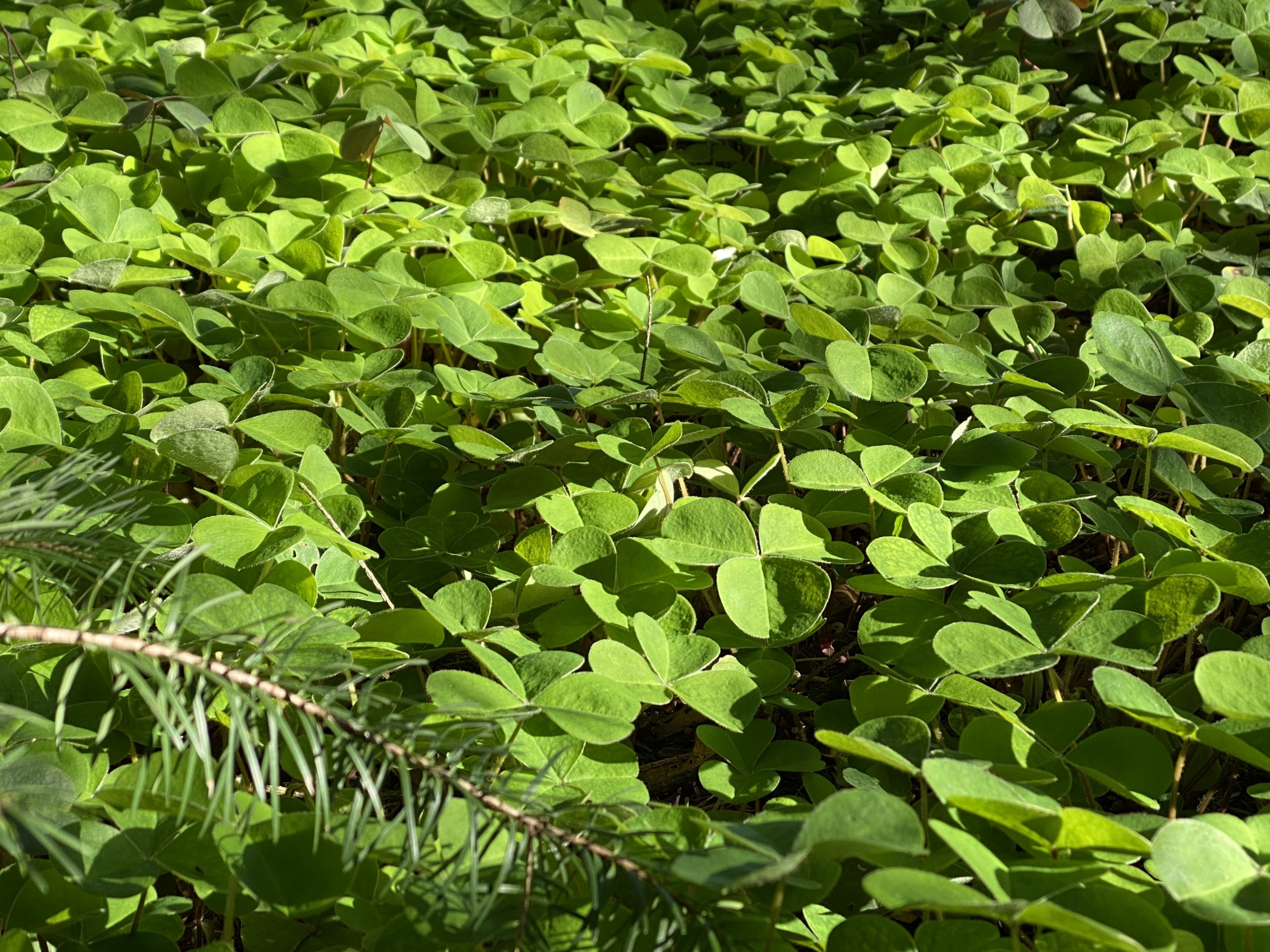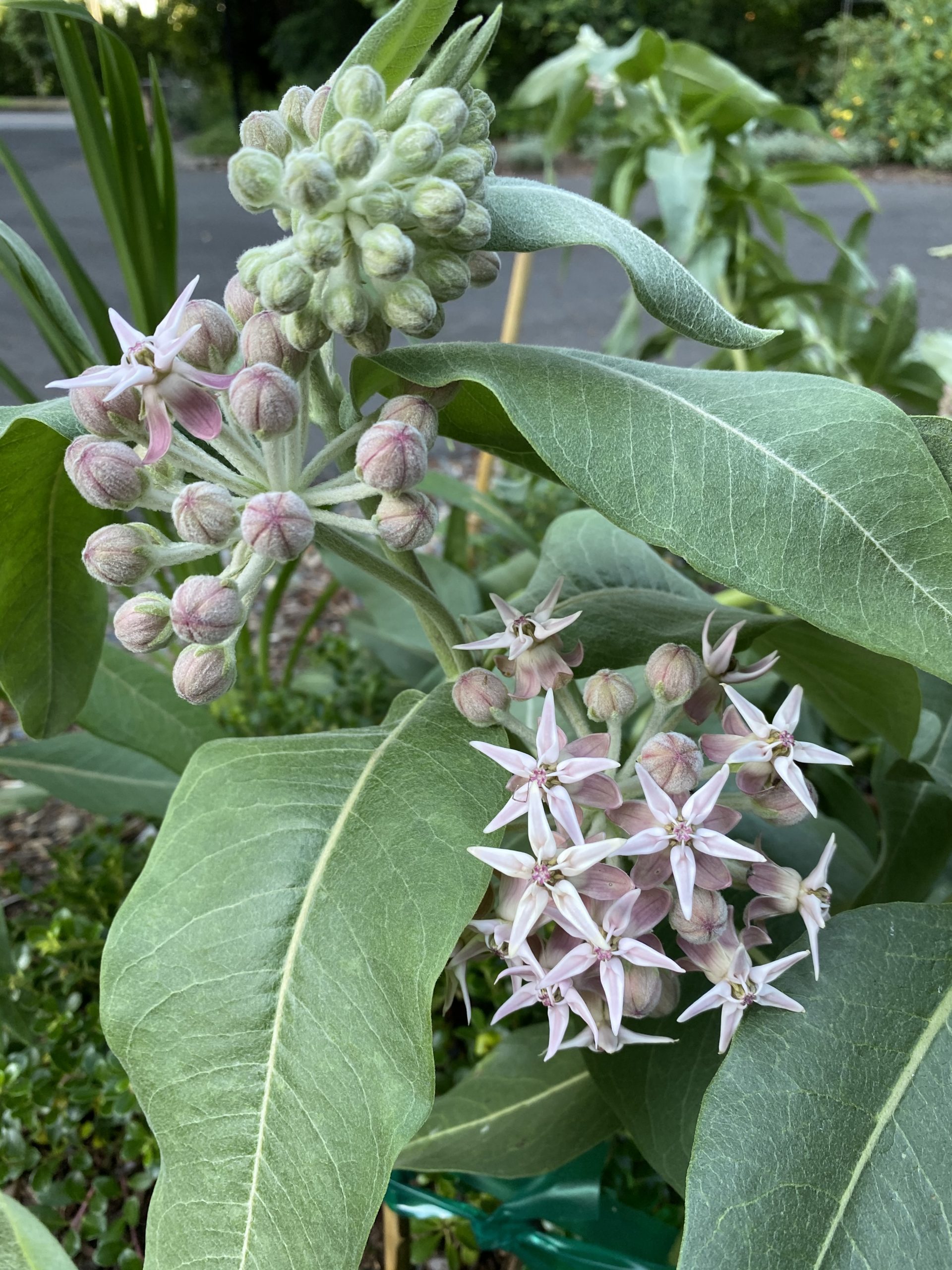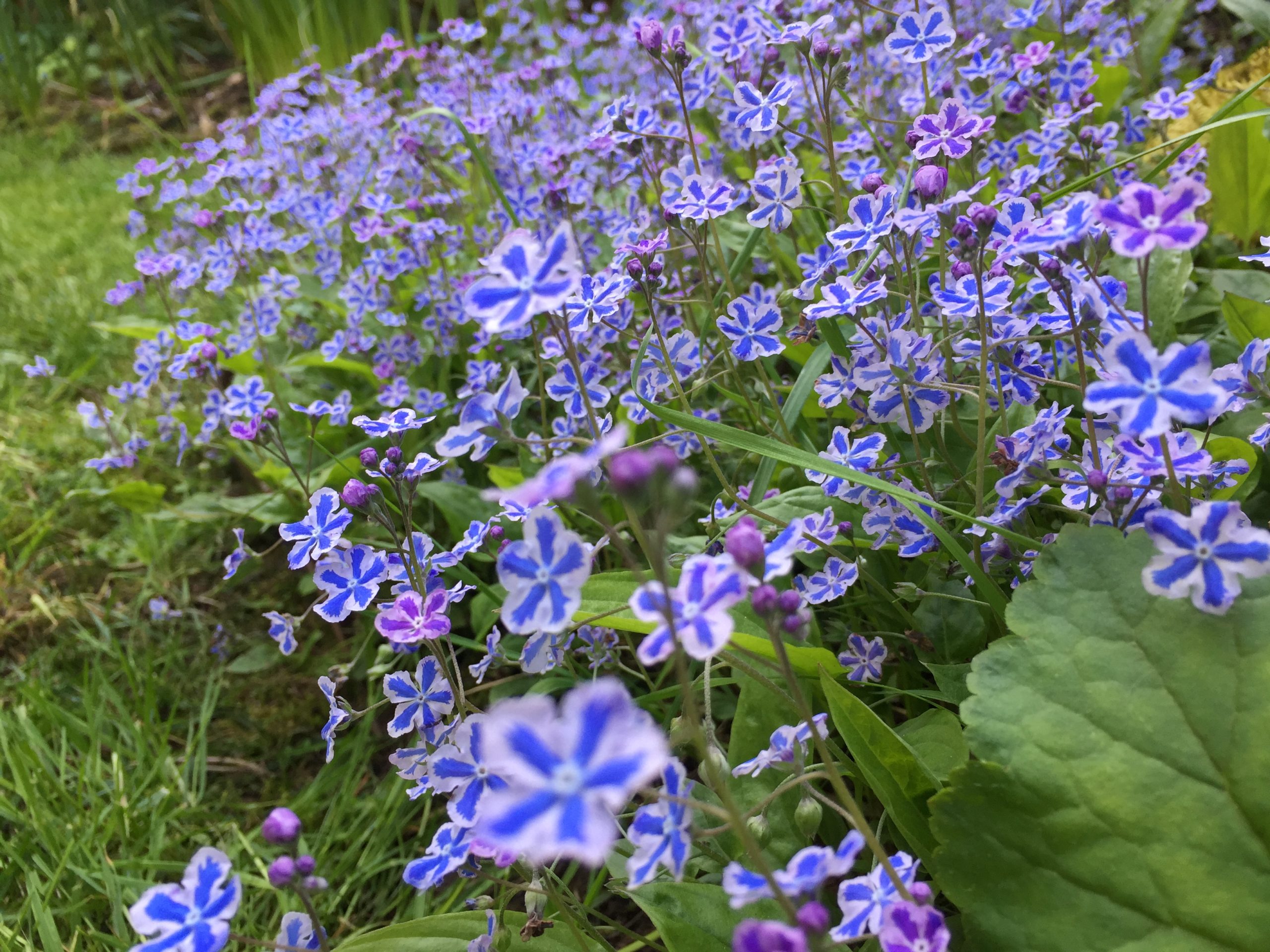Site Information: This habitat has part sun, shade, dry, and moist areas.
What inspired you to enroll in the Backyard Habitat Certification Program?
We wanted to challenge ourselves to do more to create and sustain a habitat that is more hospitable to native pollinators, birds, and other wild creatures.
How would you describe your habitat?
Four overarching principles have guided us: 1) build and sustain healthy soil; 2) grow plants that can thrive with minimal fuss and upkeep; 3) grow food for ourselves and wildlife; and 4) have fun.
What are your top three favorite native plants and why do you love them?
During springtime, my favorites are delicate perennials that create a carpet of vibrant, bright greens that set off accompanying trees and shrubs: Vancouveria hexandra (Inside-Out Flower); Oxalis (Wood Sorrell), and Dicentra formosa (Pacific Bleeding Heart). We started with a handful of plants, and they’ve naturalized in portions of our landscape.
What changes have you observed as a result of creating habitat?
Around 20 years ago, we started raising orchard mason bees (Osmia lignaria propinqua) at our home. We started with around 20 bees. Thanks to a plethora of Acer macrophyllum (Bigleaf Maples) in our neighborhood, the bees thrived. Within a few years, we experienced a significant increase in tree fruit production, including an old Mutsu apple tree that we inherited that we had assumed incapable of fruiting. As our bee population expanded, we roped in friends and neighbors to serve as hosts for our mason bee condos. We have raised at least 150,000 bees over the years. We sold the surplus bees and donated net proceeds to regional nonprofits, including Xerces, the Oregon Food Bank, and Lewis & Clark College. One consequence of our beekeeping is that we became more mindful of ensuring there was a steady supply of food – pollen and nectar – for our bees between March and June. We’re also much more careful about sustaining habitat for other bees. Last year, we had the great fortune of hosting a large black-tailed bumble nest. The bees built a nest underneath an overturned flowerpot beneath a large incense cedar tree. Thanks to the bumblebees, we had a record blueberry crop.
What were the two most significant challenges you encountered while creating habitat, and how did you address them?
1. When we moved into our home in 1998, we inherited a yard that was covered with blackberries, English ivy, and other noxious weeds. After some backbreaking work, we got rid of the blackberries. We finally got the ivy under control a few years ago. We make the rounds in early spring to eliminate ivy and blackberries. It’s easier when the soil is wet.
2. We’ve not been able to eliminate bindweed.
3. We made the mistake many years ago of planting some vinca. That has naturalized in portions of our yard. We decided that we would contain this plant but not eliminate it. Hence, we’re not eligible for the highest Backyard Habitat certification.
What resources did you find especially helpful?
1. Horticulture classes at Clackamas Community College. I learned a lot about plant identification and plant propagation.
2. Xerces Society has some great books on native pollinators.
3. We’ve been practicing organic gardening practices for over 15 years. Thanks to working knowledge of regenerative agriculture practices, we’ve been focused a lot on building soil health. Savory Institute has been a significant influence on regenerative agriculture. Oregon Tilth has been a local leader in teaching organic farming practices.
How do you enjoy your Backyard Habitat throughout the different seasons? What are its highlights in each season?
Early spring is our favorite time. This is when we get to take stock of what natives have successfully acclimated themselves to our yard and which have not. We really enjoy seeing the osoberry, trillium and Oregon grapes in bloom followed by the inside-out flowers, pacific bleeding hearts, and currants.
What part of your backyard habitat are you most proud of?
We have particularly enjoyed volunteer and adopted saplings that have grown into glorious shrubs and trees. We have several Pacific yews that trace their origins to a fabulous specimen in our yard. Nearly 20 years ago, we transplanted a volunteer coastal redwood that had popped up next to our driveway. Prior to getting decapitated by the recent ice storm, the tree had grown into a stately, 75-foot specimen. Nearby is a Douglas Fir that we planted around 1999; it was a sapling that our daughter received at the Oregon Agriculture Fair in Salem. That tree is massive as well. We’re also proud of a tanbark oak that we purchased as a three-inch sapling from the Hoyt Arboretum in 2001. That tree has experienced more hardships than Job, but it is still standing.
Is there anything else you’d like to add about your journey?
We view ourselves as stewards of our property. There are actions that we are taking now that will inure to the benefit of future owners not to mention wildlife. It’s been a slow and steady slog, but we feel our yard has become a haven for all creatures great and small.
